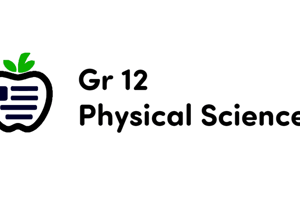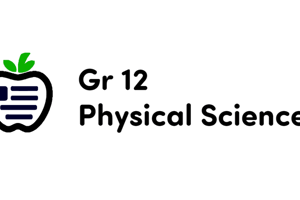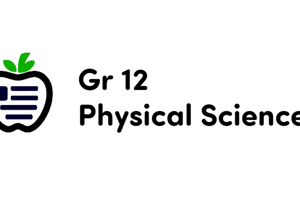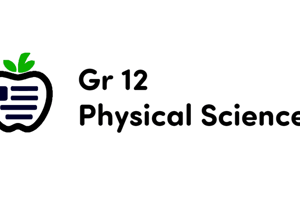Podcast
Questions and Answers
How does quantum mechanics differ from classical mechanics in describing energy?
How does quantum mechanics differ from classical mechanics in describing energy?
- Quantum mechanics states energy is continuous, while classical mechanics describes it as discrete.
- Quantum mechanics describes energy as both discrete and continuous, whereas classical mechanics only considers continuous values.
- Quantum mechanics is based on the principle of quantization, where energy exists in discrete values, unlike classical mechanics. (correct)
- Quantum mechanics focuses on macroscopic objects, defining energy as a continuous variable, in contrast to classical views.
Suppose an electron's position is known with higher certainty. According to the Heisenberg uncertainty principle, what happens to the uncertainty of its momentum?
Suppose an electron's position is known with higher certainty. According to the Heisenberg uncertainty principle, what happens to the uncertainty of its momentum?
- The uncertainty of its momentum increases. (correct)
- The uncertainty of its momentum remains constant.
- The uncertainty of its momentum becomes zero.
- The uncertainty of its momentum decreases.
Which of the following accurately describes the concept of wave-particle duality in quantum mechanics?
Which of the following accurately describes the concept of wave-particle duality in quantum mechanics?
- Particles only exhibit wave-like properties when observed; otherwise, they are purely particles.
- Waves can sometimes behave like particles under very specific circumstances, such as high energy interactions, proving duality.
- Wave-particle duality describes how matter can exhibit both wave-like and particle-like properties, depending on the experiment. (correct)
- Wave-particle duality suggests that particles and waves are distinct entities, with no overlap in their properties.
Which of the following scenarios exemplifies the quantum phenomenon of tunneling?
Which of the following scenarios exemplifies the quantum phenomenon of tunneling?
If the amount of work done on an object is $150 J$ over a time interval of $5 seconds$, what is the power delivered to the object?
If the amount of work done on an object is $150 J$ over a time interval of $5 seconds$, what is the power delivered to the object?
A car accelerates from rest. According to classical mechanics, which of the following quantities must increase?
A car accelerates from rest. According to classical mechanics, which of the following quantities must increase?
A charged particle moves through a region of space with both electric and magnetic fields. Which of the following scenarios would result in the greatest change in the particle's kinetic energy?
A charged particle moves through a region of space with both electric and magnetic fields. Which of the following scenarios would result in the greatest change in the particle's kinetic energy?
A lens is used to form an image on a screen. If the top half of the lens is covered, what will happen to the image?
A lens is used to form an image on a screen. If the top half of the lens is covered, what will happen to the image?
A container of gas is rapidly compressed. Assuming the process is adiabatic, what happens to the temperature and internal energy of the gas?
A container of gas is rapidly compressed. Assuming the process is adiabatic, what happens to the temperature and internal energy of the gas?
Which of the of the following statements correctly describes the relationship between force and energy?
Which of the of the following statements correctly describes the relationship between force and energy?
Two identical metal spheres, one with a positive charge and one neutral, are brought into contact and then separated. What will be the final charge state of each sphere?
Two identical metal spheres, one with a positive charge and one neutral, are brought into contact and then separated. What will be the final charge state of each sphere?
A sound wave travels from air into water. What changes occur in its properties?
A sound wave travels from air into water. What changes occur in its properties?
A heat engine operates between two reservoirs at different temperatures. According to the second law of thermodynamics, which of the following statements is true?
A heat engine operates between two reservoirs at different temperatures. According to the second law of thermodynamics, which of the following statements is true?
Flashcards
Quantum Mechanics
Quantum Mechanics
Behavior of matter/energy at atomic and subatomic levels.
Quantization
Quantization
Energy exists in discrete, not continuous, amounts.
Energy
Energy
The capacity to do work.
Momentum
Momentum
Signup and view all the flashcards
Waves
Waves
Signup and view all the flashcards
What is Physics?
What is Physics?
Signup and view all the flashcards
Classical Mechanics
Classical Mechanics
Signup and view all the flashcards
Newton's Second Law
Newton's Second Law
Signup and view all the flashcards
Electromagnetism
Electromagnetism
Signup and view all the flashcards
Electromagnetic Waves
Electromagnetic Waves
Signup and view all the flashcards
Optics
Optics
Signup and view all the flashcards
Wave-Particle Duality
Wave-Particle Duality
Signup and view all the flashcards
Thermodynamics
Thermodynamics
Signup and view all the flashcards
Study Notes
- Physics is the natural science that studies matter, its fundamental constituents, its motion and behavior through space and time, and the related entities of energy and force.
- Physics is one of the most fundamental scientific disciplines and its main goal is to understand how the universe behaves.
- Physics encompasses many fields of study, including mechanics, electromagnetism, optics, thermodynamics, and quantum mechanics.
Classical Mechanics
- Classical mechanics deals with the motion of macroscopic objects.
- It is based on Newton's laws of motion, which describe the relationship between force, mass, and acceleration.
- Key concepts include displacement, velocity, acceleration, force, mass, momentum, energy (kinetic and potential), work, and power.
- Conservation laws, such as the conservation of energy, momentum, and angular momentum, are fundamental principles.
- Examples include projectile motion, oscillations, rotational motion, and gravitation.
Electromagnetism
- Electromagnetism deals with the interactions between electric charges and magnetic moments.
- It is described by Maxwell's equations, which unify electricity and magnetism.
- Key concepts include electric charge, electric field, magnetic field, electric current, voltage, resistance, capacitance, inductance, and electromagnetic waves.
- Electromagnetic waves, such as light, radio waves, and X-rays, are disturbances that propagate through space carrying energy.
- Applications include electric circuits, generators, motors, transformers, and communication systems.
Optics
- Optics is the study of light and its behavior.
- It includes the study of reflection, refraction, diffraction, interference, and polarization.
- Key concepts include lenses, mirrors, prisms, and optical instruments such as telescopes and microscopes.
- Wave-particle duality describes light as having both wave-like and particle-like properties.
- Applications include cameras, lasers, fiber optics, and displays.
Thermodynamics
- Thermodynamics deals with heat, work, and energy, and the relationships between them.
- It is based on the laws of thermodynamics, which describe the behavior of energy in physical systems.
- Key concepts include temperature, heat, internal energy, entropy, enthalpy, and the laws of thermodynamics (zeroth, first, second, and third).
- Thermodynamic processes include isothermal, adiabatic, isobaric, and isochoric processes.
- Applications include heat engines, refrigerators, and power plants.
Quantum Mechanics
- Quantum mechanics deals with the behavior of matter and energy at the atomic and subatomic levels.
- It is based on the principle of quantization, which states that energy and other physical quantities can only take on discrete values.
- Key concepts include wave-particle duality, the Heisenberg uncertainty principle, the Schrödinger equation, quantum states, and quantum operators.
- Quantum phenomena include quantum entanglement, quantum tunneling, and superposition.
- Applications include transistors, lasers, nuclear energy, and quantum computing.
Important Concepts
- Energy is the capacity to do work.
- Force is an interaction that, when unopposed, will change the motion of an object.
- Momentum is the product of the mass and velocity of an object.
- Work is the energy transferred to or from an object by means of a force acting on the object.
- Power is the rate at which work is done.
- Waves are disturbances that propagate through space and time, transferring energy without transferring matter.
- Fields are regions of space where objects experience a force.
- The Standard Model of particle physics describes the fundamental particles and forces of nature.
- Relativity (special and general) describes the relationship between space, time, gravity, and motion.
Studying That Suits You
Use AI to generate personalized quizzes and flashcards to suit your learning preferences.




